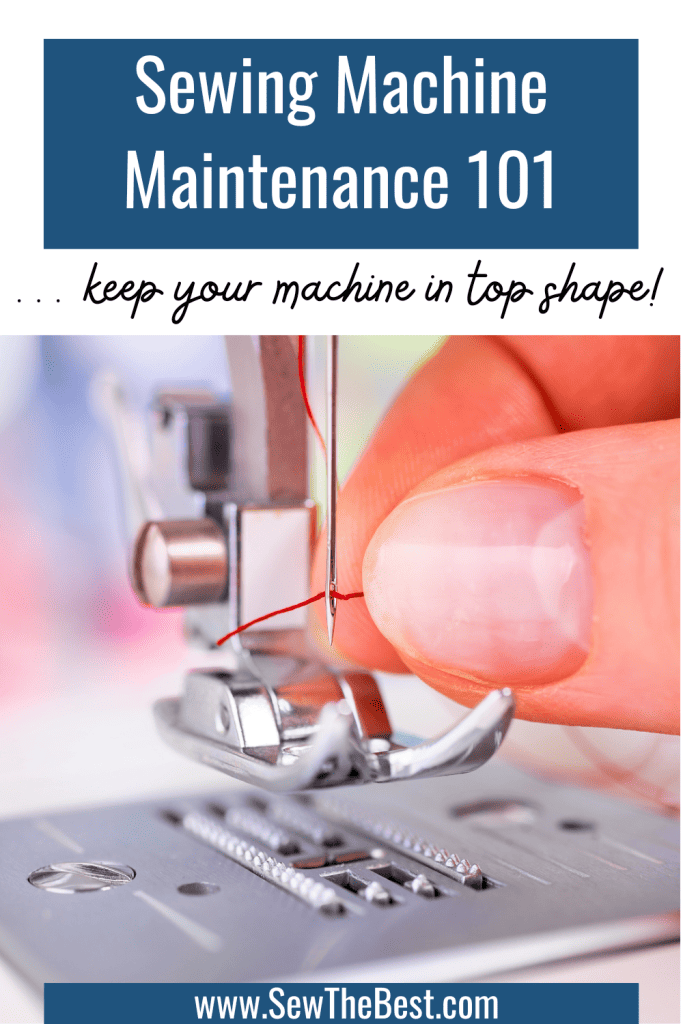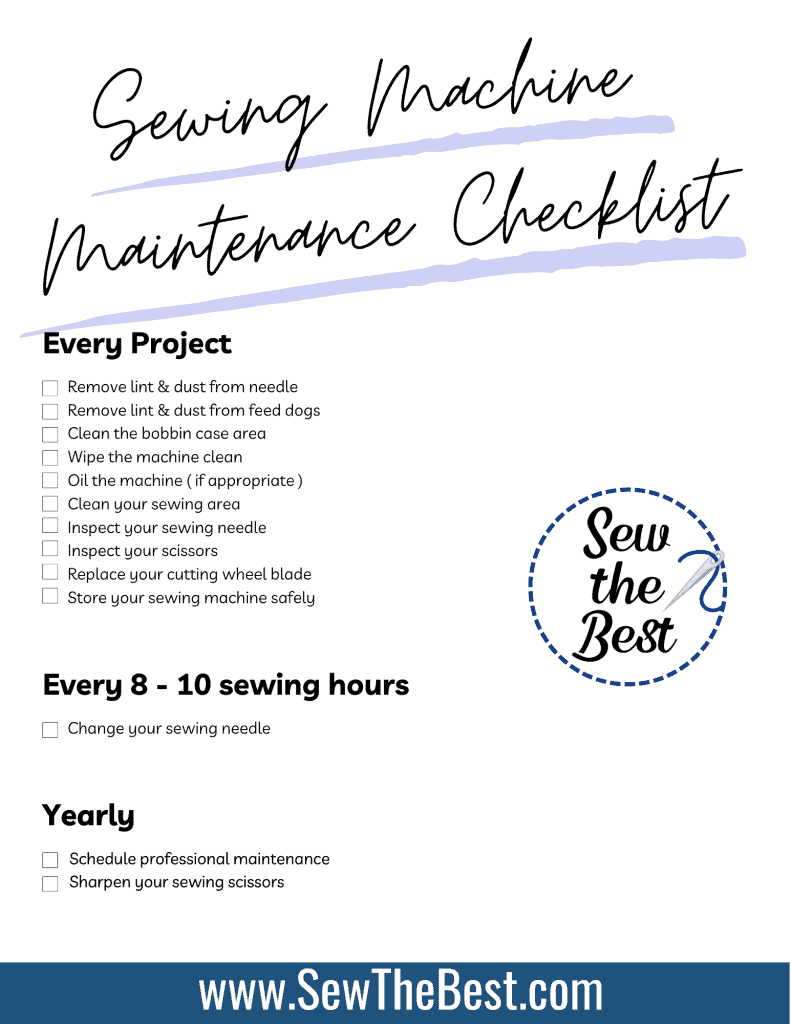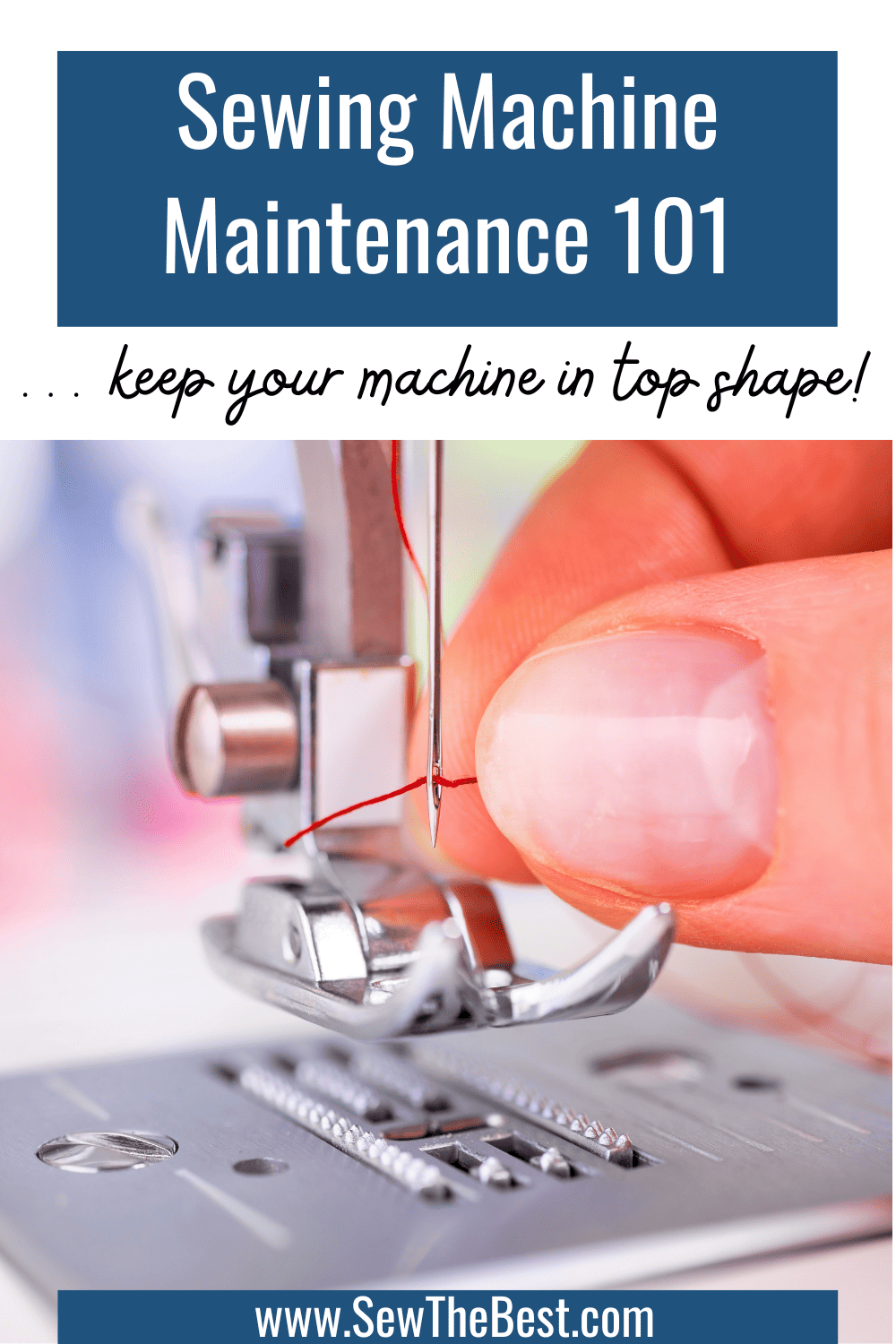Welcome to our comprehensive guide on sewing machine maintenance! If you own a sewing machine or are thinking of getting one, it’s essential to understand the importance of proper maintenance. Just like any other mechanical device, sewing machines require regular care and attention to ensure they function optimally and stand the test of time. Now, let’s delve into the importance of sewing machine maintenance and explore the array of benefits it brings along. Let’s get started!
Imagine having a sewing machine that works like a charm every time you need it, effortlessly gliding through fabric, creating beautiful stitches. Well, that’s precisely what regular maintenance can help you achieve! By dedicating a little time and effort to taking care of your sewing machine, you can extend its lifespan and enjoy smooth and trouble-free sewing sessions. In this article, we’ll walk you through the ins and outs of sewing machine maintenance, covering everything you need to know to keep your machine in top shape.

If you’re in a hurry (or just curious!) –
✅ Check deals on our favorite sewing machine maintenance kit!
Why Sewing Machine Maintenance Matters
Regular sewing machine maintenance is paramount for several compelling reasons. Firstly, it helps you avoid costly repairs. By consistently cleaning and lubricating your machine, you can prevent dust, lint, and debris from accumulating in critical components, reducing the risk of malfunctions that might require professional repairs. Secondly, proper maintenance extends the life of your sewing machine. Just like any well-cared-for tool, a sewing machine that receives routine attention will endure years of reliable service, ensuring you get the most value from your investment.
Moreover, sewing machine maintenance significantly impacts your sewing performance and results. A well-maintained machine operates smoothly, allowing you to sew with greater precision and ease. Optimal thread tension and well-calibrated components lead to more consistent and balanced stitches. When your sewing machine is in top shape, you can confidently take on various projects, from delicate fabrics to heavy-duty materials, knowing that your machine will perform flawlessly. In essence, prioritizing sewing machine maintenance empowers you to maximize your creativity and achieve outstanding sewing results for years to come.
Understanding Your Sewing Machine
To effectively maintain your sewing machine, it is essential to understand its basic components. A typical sewing machine consists of several key parts that work in harmony to create beautiful stitches. The needle is responsible for puncturing the fabric and forming stitches. It moves up and down rapidly, interlocking the top thread with the bobbin thread. The bobbin, a small spool located beneath the needle plate, holds the lower thread and plays a crucial role in creating the bottom part of the stitches. Proper thread tension is maintained by the thread tension mechanism, which ensures balanced and even stitches. Feed dogs, small metal teeth, work in coordination with the presser foot to move the fabric forward while you sew, allowing for smooth and consistent stitching. Familiarizing yourself with these basic components will give you a better understanding of how your sewing machine operates and what areas to focus on during maintenance.
Understanding how your sewing machine works helps you to understand why sewing machine maintenance is so important. When you press the foot pedal, power is transmitted to the sewing machine’s motor. As you guide the fabric under the needle, the needle moves up and down, creating stitches by forming loops with the top thread and interlocking them with the bobbin thread. The feed dogs engage with the fabric, moving it forward, while the presser foot holds the fabric firmly in place, allowing you to maintain control over your stitching. This intricate process relies on precise alignment and proper functioning of each component. Regular maintenance ensures that these components remain clean, well-lubricated, and correctly adjusted, leading to smooth and efficient sewing performance.
There are various types of sewing machines, including mechanical, electronic, and computerized models. Mechanical machines use basic mechanics and knobs for adjustments, while electronic machines have added features like buttons and digital displays. Computerized sewing machines offer advanced functionalities and programmable stitch patterns. The maintenance requirements may differ slightly between these types. However, the fundamental principles of keeping the sewing machine clean and well-lubricated apply to all models. In this article, we will provide maintenance tips that cater to the general needs of most sewing machines. For machine specific tips and steps, be sure to check with your sewing machine owner’s manual.
Sewing Machine Maintenance Tasks
Cleaning the Machine
One of the most crucial tasks in sewing machine maintenance is regular cleaning to keep your machine operating smoothly. Removing lint and dust should be done after every sewing session. Lint and dust can accumulate in various parts of the machine, such as around the needle, feed dogs, and bobbin area. Use a small brush or a lint brush designed specifically for sewing machines to gently sweep away the accumulated debris. Be sure to clean the bobbin case area. It is essential for smooth stitching. Carefully remove the bobbin case and brush away any lint or loose threads that may have gathered. Take a moment to inspect the bobbin case for any signs of damage or wear, and replace it if necessary. Remember to refer to your sewing machine’s manual for specific instructions on removing and cleaning the bobbin case, as the process may vary depending on the model.
If your sewing machine requires oiling, be sure to follow the manufacturer’s recommendations on the type of oil to use and the proper locations for oiling. Oiling helps to maintain the machine’s moving parts, reducing friction and preventing wear over time. However, not all sewing machines need oiling, so be sure to check your manual for guidance.
Lastly, keep your sewing area and work surface tidy. A clutter-free sewing space allows for smooth movement of the fabric and reduces the chances of dirt and debris getting trapped in your machine. Wipe down the surface of your sewing machine regularly with a clean, dry cloth, and avoid placing anything that could potentially interfere with its operation nearby. By incorporating these cleaning tasks into your sewing routine, you can ensure that your machine remains in top shape and ready to tackle any sewing project with ease.
Changing Needles Regularly
Regularly changing your sewing machine needle is vital for proper maintenance. Dull needles can break, bend, and wreak all sorts of havok with your sewing machine and your sewing projects. Use the correct needle type for each fabric to achieve the best results, considering factors such as fabric type and weight. A universal needle may suffice for general sewing, but ballpoint needles work better for knits, and sharp needles are essential for heavy-duty fabrics. Aim to change the needle after every 8-10 hours of sewing or sooner if signs of wear appear. By staying proactive with needle changes and selecting the right needle for each project, you ensure optimal stitching performance and preserve the longevity of your sewing machine, yielding consistently beautiful sewing outcomes.
Checking and Adjusting Tension
Checking and adjusting tension is a crucial aspect of sewing machine maintenance. Understanding tension settings is vital; it determines the balance of upper and lower thread tightness, affecting stitch quality. A balanced tension prevents loose or tight stitches. To check and adjust tension, start by threading your machine correctly and use two different thread colors (one for the top and another for the bobbin). Sew a test fabric piece and inspect the stitches. If the tension is imbalanced, adjust it gradually using the tension dial or knob until achieving even stitches. Keep experimenting on scrap fabric until you get the desired results. Regularly reviewing and adjusting tension when necessary ensures consistent and professional-looking stitches for all your sewing projects.
Looking for more help troubleshooting tension settings? Read our post on Loose Sewing Machine Stitches – How to Fix Stitch Tension
Maintaining Cutting Tools
Maintaining sharp cutting tools isn’t part of sewing machine maintenance, but maintaining these tools is essential for good sewing. Regularly check the sharpness of these tools and sharpen them or replace them as needed. Sharp cutting tools not only make cutting fabric more effortless and precise but also prevent fabric fraying and uneven edges. This fraying can cause more lint buildup in your sewing machine, not a good thing! Dull blades can also cause fabric snagging and may lead to frustration during sewing. Additionally, ensure your cutting tools are clean, free from debris, and dedicated solely to fabric cutting. Using them for other purposes, like paper or cardboard, can dull the blades faster and negatively impact fabric cutting. By keeping your cutting tools sharp and clean, you’ll enhance the overall sewing experience and achieve neater, more polished results in your projects.
Storing your Sewing Machine
Properly storing your sewing machine when not in use is vital. Follow best practices such as covering the machine with a dust cover or placing it in a storage case to shield it from light, dust and dirt. Store the sewing machine in a cool, dry place, away from direct sunlight and extreme temperatures. It’s also advisable to remove the needle and bobbin and clean the machine before storage. Avoid potential damages by gently releasing the tension, lifting the presser foot, and placing a soft fabric or paper between the presser foot and the feed dogs to prevent them from touching. Moreover, refrain from storing heavy items on top of the machine to avoid unnecessary pressure on delicate components. By taking these precautions and following proper storage practices, you’ll safeguard your sewing machine and ensure it’s in excellent condition for the next time you’re ready to sew.
If you’re looking for a good soft cover to protect your sewing machine, we’re a fan of this one.
Regular Service Appointments
In addition to your own maintenance efforts, it’s essential to have your sewing machine professionally serviced regularly. Schedule an appointment with a qualified technician or sewing machine repair professional at least once a year, even if your machine seems to be running smoothly. These professionals have the knowledge and tools to perform thorough inspections and identify potential issues that may not be apparent to the untrained eye. Professional servicing includes tasks such as cleaning hard-to-reach areas, lubricating internal components, and fine-tuning the machine’s mechanisms for optimal performance. Regular servicing can prevent minor problems from turning into major malfunctions and may even extend the lifespan of your sewing machine. By entrusting your machine to a skilled professional, you can rest assured that it will continue to serve you faithfully and reliably for many years of enjoyable sewing ahead.
Sewing Machine Maintenance Checklist

FAQ
Why is regular sewing machine maintenance necessary?
Regular sewing machine maintenance is essential to keep your machine in top shape and ensure its optimal performance. By taking care of your sewing machine, you can prevent potential issues, avoid costly repairs, and extend its lifespan, allowing you to enjoy seamless and trouble-free sewing experiences.
What are the benefits of maintaining my sewing machine?
Proper maintenance of your sewing machine offers several benefits. It helps you achieve consistent and professional-looking stitches, improves sewing performance, and enhances the overall quality of your sewing projects. Maintaining your sewing machine also extends it’s life, so you can get the most value from your sewing machine and continue to create beautiful garments and crafts for years to come.
How often should I clean my sewing machine?
Cleaning your sewing machine should be a regular part of your sewing routine. After every sewing session, take a few moments to remove lint, dust, and debris from various parts of the machine, such as around the needle, feed dogs, and bobbin area. Additionally, it’s beneficial to do a more thorough cleaning periodically, ideally after every project or at least once a month, depending on how frequently you use your machine.
What happens if I neglect to change my sewing machine needle regularly?
Neglecting to change your sewing machine needle regularly can lead to various issues during sewing. A dull or bent needle can cause skipped stitches, fabric puckering, and may even damage the fabric or your machine. To maintain a smooth and trouble-free sewing experience, it’s essential to change the needle after every 8-10 hours of sewing time or sooner if you notice any signs of wear or damage.
Can I adjust the tension on my sewing machine myself?
With most sewing machines, yes, you can adjust the tension on your sewing machine yourself. Understanding tension settings and how they affect your stitches is crucial. By using the correct thread and fabric combination and following the manufacturer’s instructions, you can check and adjust the tension to achieve balanced and even stitches.
Is it necessary to have my sewing machine professionally serviced?
Yes, professional servicing is essential, even if your sewing machine appears to be running smoothly. Having your machine professionally serviced at least once a year allows for a thorough inspection by skilled technicians. They can identify potential issues early on, perform deep cleaning, and fine-tune the machine’s mechanisms, ensuring its continued smooth operation and preventing minor problems from escalating into major repairs.
How can I store my sewing machine to avoid potential damages?
To avoid potential damages during storage, store your sewing machine in a cool, dry place away from direct sunlight and extreme temperatures. Use a dust cover or storage case to protect it from dust and dirt. Remove the needle and bobbin and clean the machine before storage. Avoid storing heavy items on top of the machine and release the tension and lift the presser foot to relieve any unnecessary pressure on delicate components.
Can you service a sewing machine yourself?
While some aspects of sewing machine maintenance, such as cleaning and changing the needle, can be done by sewing enthusiasts themselves, comprehensive servicing is best left to qualified professionals. Sewing machines have intricate internal components that require expert knowledge and specialized tools for proper inspection, cleaning, and adjustments. Professional servicing ensures thorough and precise maintenance, identifying potential issues that may not be apparent to an untrained individual.
Do sewing machines need lubrication?
Yes, sewing machines do need lubrication to ensure smooth operation and reduce friction between moving parts. However, not all sewing machines require oiling, as some modern models come with self-lubricating mechanisms. For machines that need lubrication, it’s crucial to use the right type of sewing machine oil as specified in the manufacturer’s manual. Using the wrong oil or over-oiling the machine can lead to problems, so always follow the manufacturer’s recommendations.
How often do you oil a sewing machine?
The frequency of oiling your sewing machine depends on its model and how often you use it. As a general guideline, some older mechanical sewing machines may require oiling after every 8-10 hours of sewing time or once a month, whichever comes first. However, it’s essential to consult your sewing machine’s manual for specific guidelines on oiling intervals. If you have a newer model or one with a self-lubricating mechanism, it may not require frequent oiling, and the manual will provide instructions on whether and how to oil your particular machine.
Summary
Sewing machine maintenance is a fundamental aspect of ensuring smooth, efficient, and enjoyable sewing experiences. By taking the time to clean your machine regularly, change the needle, check and adjust tension, maintain cutting tools, and store it properly, you can extend the life of your sewing machine and achieve consistent, professional-looking stitches. Remember to seek professional servicing at least once a year for a comprehensive inspection and fine-tuning. Following the maintenance checklist and incorporating these best practices into your sewing routine will keep your beloved machine in top shape and ready for any creative project that comes your way. With proper care and attention, your sewing machine will be your faithful stitching companion, allowing you to indulge in your passion for sewing and crafting for many years to come. Happy sewing!
